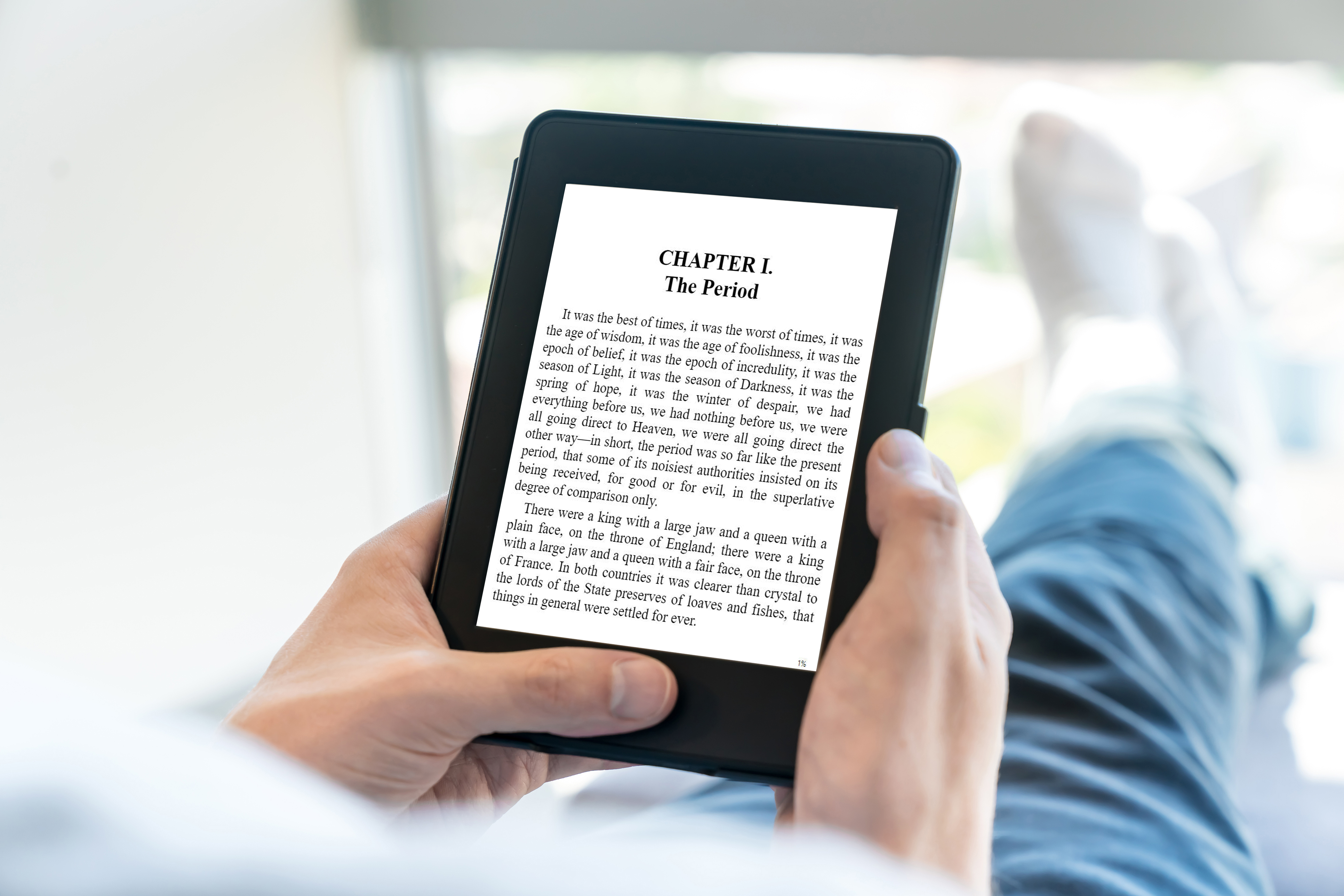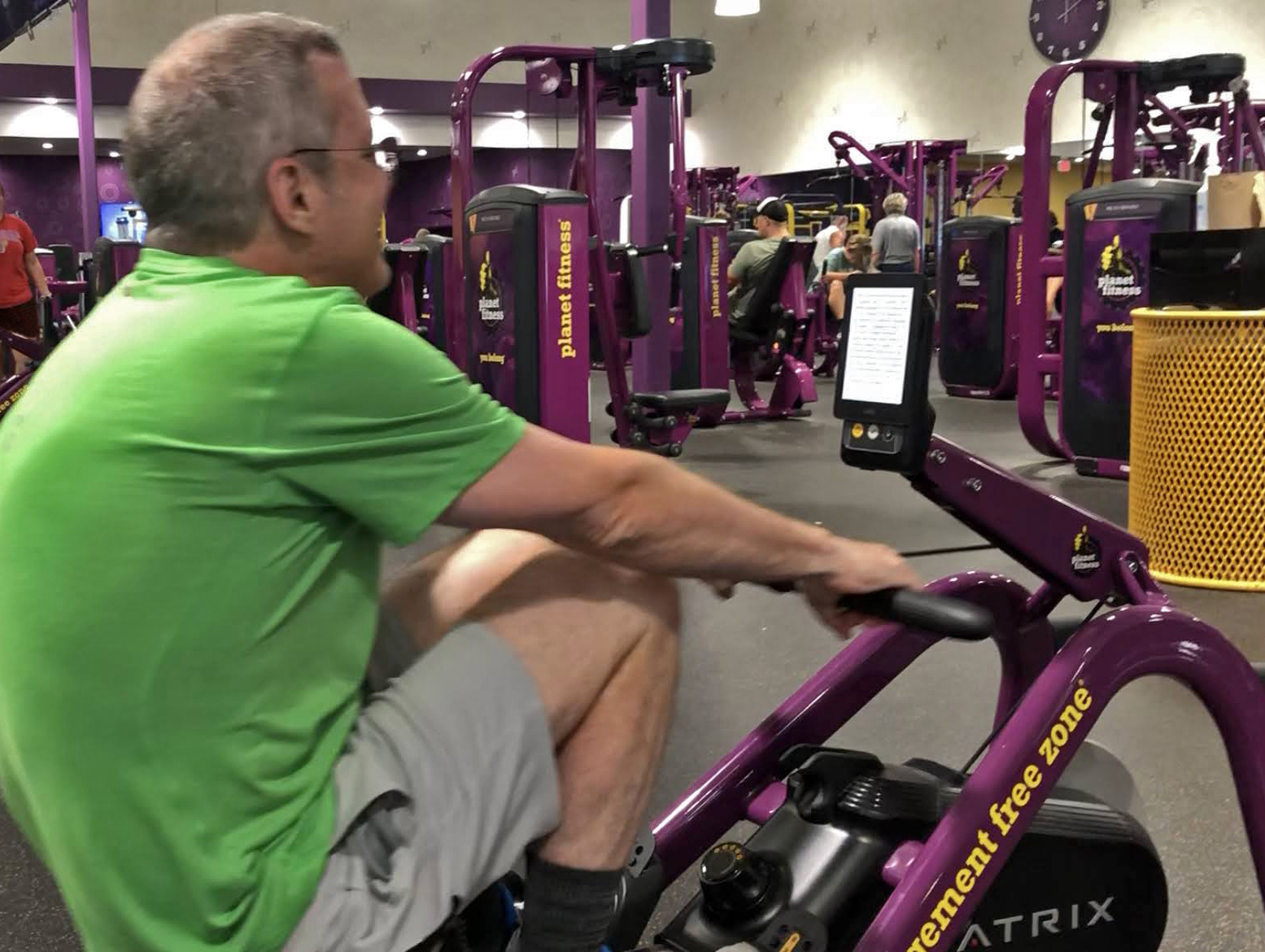Written by Mark Evilsizor
From his column Tech
 Most days at lunch I take “my precious” with me. As I munch my sandwich, I sit and gaze at the glowing image with singular attention as it stimulates my intellect and emotions. Sometimes it leaves me smiling; other times I sense sadness or anger. My reactions occasionally spark a curious stare from passersby or a question causing me to break my reverie as I share how much I enjoy my eReader.
Most days at lunch I take “my precious” with me. As I munch my sandwich, I sit and gaze at the glowing image with singular attention as it stimulates my intellect and emotions. Sometimes it leaves me smiling; other times I sense sadness or anger. My reactions occasionally spark a curious stare from passersby or a question causing me to break my reverie as I share how much I enjoy my eReader.
Even though Amazon brought the first Kindle to market in 2007, many people remain unfamiliar with eReaders. I’ve been asked if it is a black and white tablet or a giant phone, as large-display devices have become popular. Such conversations offer an opportunity to share the joys of reading and of having a convenient device for doing so. Looking back, I was surprised to see I have not written an article about my one device to read them all. I am rectifying that now.
There are several brands of eReaders, the most widely used being Amazon Kindle, Barnes and Noble Nook and Rakuten Kobo. All use an E-Ink or digital ink display (AKA E-paper). Nearly all phones and tablets use a form of LCD or LED display which is bright, glossy, colorful, and light-emitting. E-paper is different, using tiny capsules of black or white pigment to mimic the appearance of ink on paper. No light emission is necessary to display the page of an eBook, so it is easier on the eyes and works great in bright sunlight, just like a paper book. It also does not consume electricity when displaying a page, newspaper, or magazine. It only draws from the battery when we turn the page or if we have a model with side lighting. Due to this minimal use of juice, the battery only needs to be charged once every couple of months.
While a physical book is the gold standard for reading, and I have a special fondness for those with a deckle edge, eReaders have many advantages to the printed page which are not immediately obvious. One is a built in dictionary. If we were reading this article on an eReader, we could touch the word “deckle” and its definition would pop up. I find this especially valuable when learning about a culture or subject with which I’m unfamiliar. eReaders also work great at the gym. I can work out on a stair-stepper or treadmill and set my Kindle on the console, lose myself in a story, and strengthen my heart—literally and figuratively. However, I must admit it does not work well on rowing machines. I know this because I tried, as my wife Sherry guffawed at my frustrated attempts.
Sherry does, however, love the ability to easily adjust the font size on her eReader. At the gym this is helpful as one is not just sitting still sipping tea. She also uses this feature as a combination reading help and to strengthen her sense of progress as she turns pages more frequently. I like to tease that when I look over her shoulder at what she is reading, her author is shouting at her: “IT WAS THE BEST OF TIMES, IT WAS THE WORST OF TIMES, IT WAS THE AGE OF WISDOM, IT WAS THE AGE OF FOOLISHNESS…”. She’s quick to remind me that with the large typeface, she can read on her side in the bed without glasses and finish that last chapter before falling asleep.
An eReader can carry hundreds of books in a very small space, making it excellent for travel. Some devices also display the book cover when idle so persons can see what others are reading and perhaps spark a conversation. Another feature I enjoy is that the highlights and notes I make in my Kindle are easily accessible by logging in to an Amazon website. This makes them simple to review and select for my monthly book club.
Lastly, eReaders are beneficial for what they do not do. They do not access Facebook or Twitter, do not pop up alerts when it’s our turn in a chess match, and do not beep and flash to fight for attention when the weather changes. eReaders do one thing and do it well—provide a natural, book-like experience for reading peacefully. And in this modern era where technology so often prods us to switch our attention every 30 seconds, that’s a very good feature indeed.
Mark Evilsizor has worked in Information Technology for more than 25 years. He currently serves as head of IT for the Linda Hall Library in Kansas City, Mo. Opinions expressed are his own.
Additional References
https://www.pcmag.com/picks/the-best-ereaders,
https://www.eink.com/electronic-ink.html
https://www.eink.com/reading-writing.html?type=application&id=1

choice for exercising and reading eBooks.
